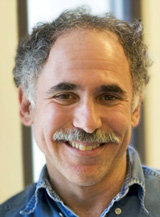|
published by Ecco/Harper Collins, 2006
|
|
Challenging Nature
Previous books
Presentations
Publications/Writings
Biography
Princeton teaching
|
words
Nature 412, 21 (5 July 2001) | doi: 10.1038/35083650
What are clones?
They're not what you think they are.
Lee M. Silver1
Abstract
"Words that we expect to be generally used ... should be short, euphonious, phonetically spelled, easily pronounced and different from any other word in ordinary use so that it [ sic ] will not suggest any other meaning than the one desired." With this explanation, Herbert J. Webber coined the word "clone" in 1903 to describe a colony of organisms derived asexually from a single progenitor. Webber's contribution to "a more exact expression to our thoughts" found quick acceptance among botanists and gained favour among biologists working with cells in culture. As late as 1965, the science-fiction novel The Clone still used the word according to its original connotation (albeit with an absurd plot) to describe a cellular blob expanding across the sewers of a city. Further reading
A clone of animal siblings can form naturally, on occasion, as a result of asexual reproduction from a single progenitor embryo. However, in contrast to plants, whole animals cannot be grown directly from cells that have begun to differentiate into a specialized form. Forty years ago, developmental biologists wondered whether this was a true biological limitation or just a technical difficulty. It was this question, rather than interest in cloning per se , that motivated John Gurdon to perform the experiments in which he transplanted nuclei from normal frog cells into enucleated eggs to produce adult frogs. Looking back now at Gurdon's review of his research in a 1968 Scientific American article, I am struck that only passing reference is made to clones (as colonies of embryos), with attention focused instead on the developmental potential of differentiated cells.
The popular understanding of cloning has its roots in Alvin Toffler's 1970 book Future Shock . Toffler took a clear scientific concept and muddled it into the fantastical prediction that "man will be able to make biological carbon copies of himself". Unfortunately, this fictitious version of cloning was presented in a highly influential, non-fiction book. In one fell swoop, clones morphed from the simple progeny of asexual reproduction to sophisticated products of biological engineering created by scientists bent on controlling nature.
Through the popular media, this version of a clone was rapidly integrated into every major language. Ironically, popularization was helped by the very criteria by which Webber had aimed to ensure proper use of the word. The concept of a clone extended to inanimate objects such as computers (PC clones), as well as becoming a figure of speech to describe people ("Tony Blair is a clone of Bill Clinton"). Until 1997, however, the public felt safe in its knowledge that "real" human clones — biological carbon copies — were still securely in the realm of science fiction.
 The sense of security was shattered the day that video clips of Dolly the cloned sheep, prancing in her pen, were beamed down to television screens around the globe. To all appearances, Dolly had been created full-grown within a Frankenstein-like Scottish laboratory. Suddenly, the world had a name and an image to attach to the Promethean-like power of bioengineering.
Insight into the current popular view of cloning can be gleaned from the recent US cloning film, The 6th Day . The story begins with a series of newspaper headlines reporting the cloning of Dolly and the completion of the Human Genome Project. The process of cloning is then depicted in stunning detail, including imprinting the DNA as well as the mind and physical features of a living person onto a blank body that is then brought to life.
It is not just the lay public that views cloning in this way. In a recent survey of my students, I discovered that most thought that cloning could do more than just reproduce a genome. A leading US publisher of children's books recently released Who Cloned the President? , presenting the full-grown-copy version of cloning as a scientific fact. The real US president, George W. Bush, has said that "no research to create a human being should take place in the United States"; and Ian Wilmut, who brought us Dolly, writes with Rudolf Jaenisch that "we would never be in favour of [using cloning technology for] copying a person".
I was recently contacted by a Dutch television producer for my reaction to reports that a fringe religious group was ready to use cloning to bring dead children back to life. For the umpteenth time, I explained that no technology exists for making copies of people, and that real cloning technology might only lead to the birth of a unique and unpredictable child who had the same DNA sequence as someone else, but nothing more. The producer was abrupt and dismissive: "Dr Silver, you are not aware of what cloning can accomplish. Clones are not what you think they are."
After years of believing otherwise, I realized that he was right. The scientific community has lost control over Webber's pleasant-sounding little word. Cloning has a popular connotation that is impossible to dislodge. We must accept that democratic debate on cloning is bereft of any meaning. Science and scientists would be better served by choosing other words to explain advances in developmental biotechnology to the public.
References
|
Hover over or click on books to order from Amazon.com
|



